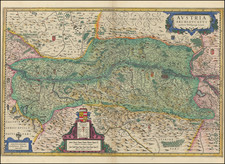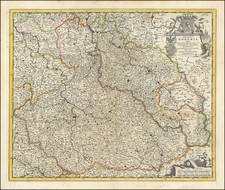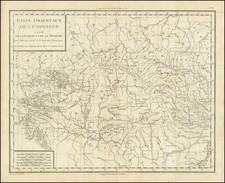Detailed map of the area around the town of Glatz (Czech: Kladsko, Polish: Kłodzko) during the Seven Years' War, with a key detailing the actions of the combatants at the left and the positions of the forces noted in green and yellow.
In the 18th Century, the fortress town of Glatz became the focal point of military strategy in the Silesian theatre. In 1760, amid the broader conflict known as the Third Silesian War, Glatz bore witness to a siege that epitomized the period's warfare and geopolitical strife.
The Austrian forces, under the command of General von Laudon, encircled Glatz on June 6, 1760. However, the commencement of the siege awaited the arrival of heavy artillery from Olmütz (Olomouc), located in neighboring Moravia. This lull in action was interrupted by news of an advancing Prussian force under Fouqué, prompting Laudon to confront and ultimately capture Fouqué at the Battle of Landeshut on June 23, 1760.
With the Prussian threat momentarily neutralized, Laudon redirected his efforts towards Glatz. The siege formally commenced on July 20, 1760, with the deployment of the Austrian artillery. The bombardment that ensued weakened the fortress's defenses sufficiently to organize a storming party. This brave cohort of volunteers successfully breached the city's defenses, opening the gates for the Austrian army's entry.
The capture of Glatz stood out as a singular Austrian success in a year otherwise characterized by extensive maneuvers and hard-fought battles that largely maintained the status quo from the previous year. Despite this, the loss of Glatz was a significant point of contention and a personal affront to Prussian pride.
The aftermath of the siege saw Colonel Bartholomäus d'O, the Prussian commander of Glatz, taken as a prisoner of war. His subsequent release did not herald a return to honor; instead, Frederick the Great, the Prussian monarch, ordered his execution for the failure to hold Glatz—an act that underlines the era's merciless military code and the high stakes of eighteenth-century warfare.
The text at the left notes the following:
The text appears to be an 18th-century German document providing explanations of certain terms, likely corresponding to labels on a map or a description of military dispositions. Here's a summary contextualized within the 1760 Siege of Glatz:
-
a. Reference to an Imperial-Royal Hungarian Corps under the command of Ferdinand Philipp Graf von Harsch.
-
b. The old fortress and a place called "Neiß-Kruß "
-
c. A "new fortress on the other side of the Elbe"
-
d. The fortifications of Glatz along the Elbe, potentially a strategic point of interest during the campaign leading up to the siege.
-
e. Fortifications that could be targeted from the river
-
f. The place captured on the 20th of July
-
g. A detachment of 1200 hussars at a distance from the main defenses
-
h. batteries that commenced firing on the 20th of July











![[ Tribal Germany ] Germania Antiqua in IV magnos populaos in minores et minimos distincta et Regiones Danubium…1785](https://storage.googleapis.com/raremaps/img/small/97958.jpg)
![[Prague] Panorama Kralovske Prahy](https://storage.googleapis.com/raremaps/img/small/89611.jpg)

